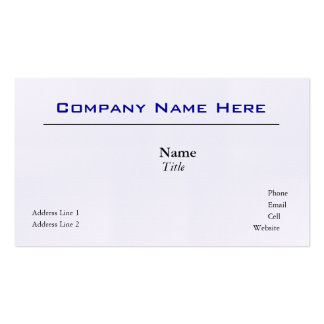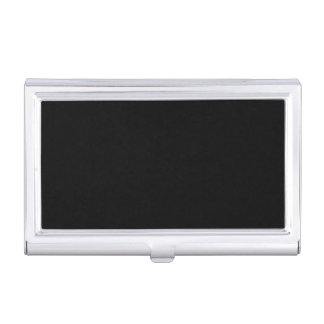An employee confidentiality agreement is similar to a non-disclosure agreement. The difference is that a confidentiality agreement is with employees and contractors, where a non-disclosure agreement is with other firms.
An employee confidentiality agreement should include broad language that requires employees and other individuals to protect non-public information about the company, its customers, and its employees. It should also instruct them not to use this non-public information or disclose this information with others, except as required by their current position with the company.
However, just because information is not explicitly shared that does prevent the information from being used by former employees when making decisions in new positions with other firms. This is why a business may also consider having employees sign a non-compete agreement in addition to a confidentiality agreement.
In order for trade secrets to be protected under an employee confidentiality agreement, you have to be able to provide proof that they are both proprietary and non-public. This means that the information is not known to the world at large but only to a small, select group of people within the company. Also, it should be labeled or otherwise communicated that the information is confidential. For an employee confidentiality agreement to prove effective, it should provide for the following:
Make sure the employee confidentiality agreement complies with the personnel manual. For an employee confidentiality agreement to be most effective, the personnel manual should delineate company policy on proprietary information. The business must define what constitutes a secret if the agreement is to work. This definition can be accomplished by taking the following steps:
Although no effort to secure corporate secrets is foolproof, confidentiality agreements are a step in the right direction. They deter misuse of information and place competitors on notice that they run the risk of litigation if they use dishonest insiders to steal secrets.
An Employee Confidentiality Agreement Can Help Retain Secret Information:
- First, the simple act of signing the agreement may impress upon the person the importance of confidentiality and prevent him or her from revealing the business’s information.
- Second, there are state laws that protect trade secrets, but to take advantage of these laws the business must be able to show that it attempted to keep their information secret.
- Finally, a confidentiality agreement provides a basis to sue a current or former employee if he or she discloses or utilizes information in violation of an agreement. A confidentiality policy will demonstrate, in court, that something was meant to be kept confidential.
An employee confidentiality agreement should include broad language that requires employees and other individuals to protect non-public information about the company, its customers, and its employees. It should also instruct them not to use this non-public information or disclose this information with others, except as required by their current position with the company.
However, just because information is not explicitly shared that does prevent the information from being used by former employees when making decisions in new positions with other firms. This is why a business may also consider having employees sign a non-compete agreement in addition to a confidentiality agreement.
In order for trade secrets to be protected under an employee confidentiality agreement, you have to be able to provide proof that they are both proprietary and non-public. This means that the information is not known to the world at large but only to a small, select group of people within the company. Also, it should be labeled or otherwise communicated that the information is confidential. For an employee confidentiality agreement to prove effective, it should provide for the following:
- Confidentiality – A confidentiality provision would prohibit an employee or someone associated with the business from using or disclosing any trade secrets he or she may have had access to in the course of employment or interaction with the business. In short, the person agrees, on pain of legal sanctions, to ensure the confidentiality of the business secrets entrusted to him or her.
- Restriction – This clause is generally used only in employee confidentiality agreements. However, some businesses use this clause in all their confidentiality agreements. This provision ensures that the person will not compete with the business after leaving the job or once the interaction with the business is over. For example, the agreement might require that the employee not start his or her own company or take a job with a competitor for a specified period after leaving the job.
- Assignment – Since the person may develop valuable data in the course of employment or interaction with the business, this provision ensures that the data belongs to the business. In short, it addresses the question of who owns the resulting trade secret.
- Severability – Because one or more provisions of a confidentiality agreement could run afoul of the law, it’s a good idea to include a severability clause. This clause would uphold the remaining provisions in the agreement if a court should strike down one or more provisions as illegal or contrary to public policy.
- Acknowledgement – To keep the person from later pleading ignorance and challenging the agreement, the agreement should include a clause that stipulates that the person understands and voluntarily consents to the agreement’s provisions.
Make sure the employee confidentiality agreement complies with the personnel manual. For an employee confidentiality agreement to be most effective, the personnel manual should delineate company policy on proprietary information. The business must define what constitutes a secret if the agreement is to work. This definition can be accomplished by taking the following steps:
- Labeling proprietary information as “secret and confidential”.
- Limiting access to the information to employees with a “need to know” basis.
- Periodically searching employee lockers, desks, and PC files for unauthorized storage of information.
- Placing notices about the company’s policy at all photocopying machines, computers, and facsimile machines.
- Limiting access to sensitive, corporate information by unauthorized persons.
- Requiring outside consultants and temporary employees, who have access to sensitive proprietary data, to sign confidentiality agreements.
- Including an acknowledgement in termination notices that reminds employees of their continued obligation to not misuse corporate trade secrets.
Although no effort to secure corporate secrets is foolproof, confidentiality agreements are a step in the right direction. They deter misuse of information and place competitors on notice that they run the risk of litigation if they use dishonest insiders to steal secrets.






No comments:
Post a Comment